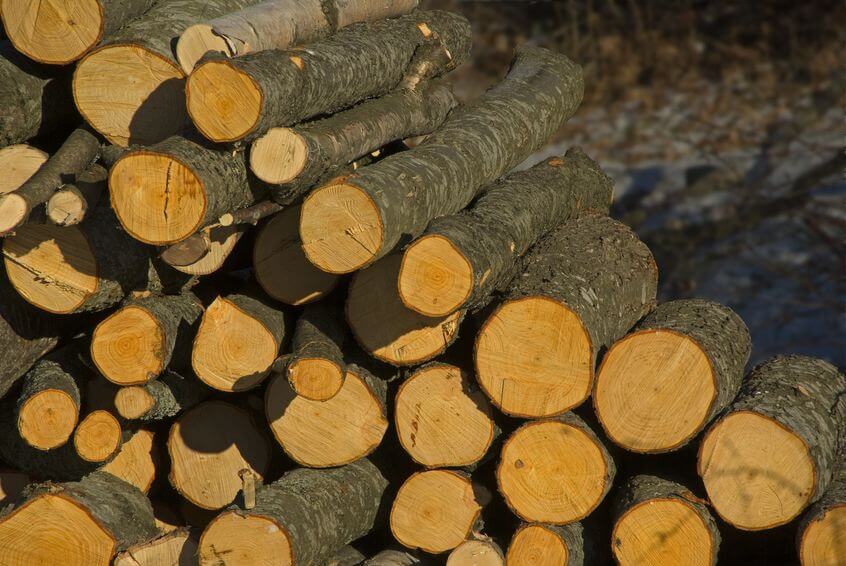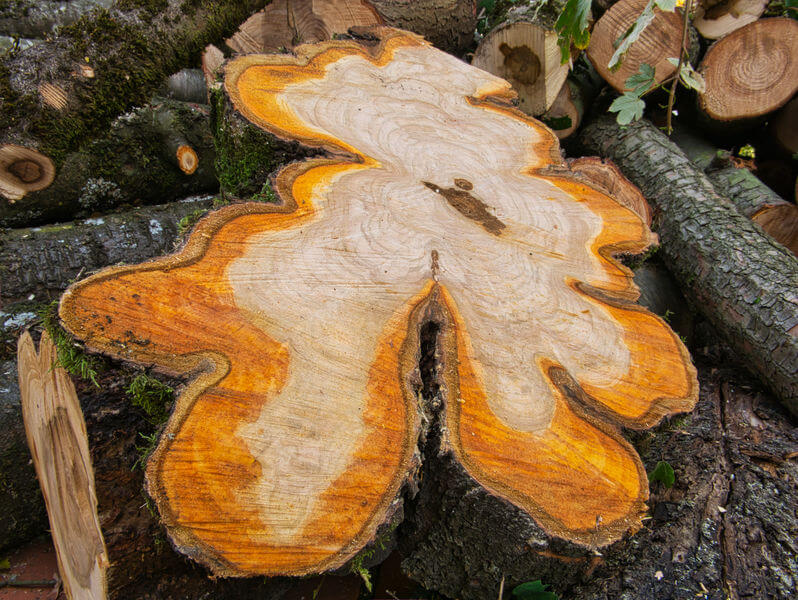Welcome, young woodworking enthusiasts! Today, we’re going to dive into the question that’s been on your mind: does cherry wood split easy? Let’s find out together, shall we?
Now, you might be wondering why cherry wood’s propensity for splitting is even important. Well, imagine spending hours crafting a beautiful piece of furniture, only to have it crack and split apart. Not exactly the desired outcome, right? That’s why it’s crucial to understand the nature of cherry wood and its potential to split.
But fret not, young woodworkers! We’re here to shed some light on the matter. In this article, we’ll explore the factors that influence cherry wood’s tendency to split and provide you with some tips and tricks to prevent those pesky cracks from forming. So grab your tools and let’s get started on this woodworking adventure!

Does Cherry Wood Split Easy? Exploring the Durability of Cherry Wood
Cherry wood is highly prized for its beautiful grain patterns and rich color. It is commonly used in furniture making, cabinetry, and flooring due to its durability and aesthetic appeal. However, one concern that often arises when working with cherry wood is its tendency to split. In this article, we will delve into the topic of whether cherry wood splits easily, exploring its characteristics, common causes of splitting, and tips to prevent it. So, let’s dive in and uncover the truth about cherry wood and splitting.
The Characteristics of Cherry Wood
Cherry wood, scientifically known as Prunus serotina, is a hardwood species primarily found in North America. It is known for its reddish-brown color that darkens with age, as well as its tight, straight grain. Cherry wood has a medium to fine texture, making it easy to work with using both hand tools and machinery. It is moderately heavy, with a density that provides stability and durability to the finished product.
One characteristic of cherry wood that can influence its susceptibility to splitting is its natural high moisture content. Cherry wood typically contains around 50% moisture when freshly cut, which gradually decreases as it dries. This moisture content can contribute to its tendency to split, especially when exposed to rapid changes in temperature or humidity.
The Causes of Splitting in Cherry Wood
While cherry wood is generally durable, it is not immune to splitting. There are several common causes that can lead to splitting in cherry wood:
- Moisture Imbalance: As mentioned earlier, cherry wood has a high moisture content when freshly cut. If it is not properly dried or acclimated to its environment, it can experience moisture imbalance, leading to stress within the wood fibers and resulting in splitting.
- Temperature and Humidity Changes: Rapid changes in temperature or humidity can cause cherry wood to expand or contract quickly, leading to tension and ultimately, splitting. It is important to maintain a stable environment to minimize the impact of these changes on the wood.
- Improper Handling and Storage: Rough handling during transportation or improper storage conditions can introduce stress to the wood, making it more prone to splitting.
These factors emphasize the importance of proper handling, storage, and acclimation when working with cherry wood to minimize the risk of splitting.
Tips to Prevent Splitting in Cherry Wood
While cherry wood may have a tendency to split, there are several measures you can take to prevent this issue:
- Proper Drying: Ensure that your cherry wood is properly dried before using it. This can be done by air-drying or kiln-drying the wood to reduce its moisture content to a suitable level.
- Acclimation: Allow the cherry wood to acclimate to the environment in which it will be used. This helps the wood adjust to its surroundings, minimizing the risk of splitting due to moisture imbalance.
- Sealing the Ends: Apply a wood sealer or wax to the ends of the cherry wood to slow down the release or absorption of moisture, reducing the risk of splitting.
- Stable Environment: Maintain a stable temperature and humidity in the area where cherry wood is stored or used to minimize the impact of moisture and temperature changes.
- Proper Handling: Handle cherry wood with care to avoid introducing unnecessary stress that could lead to splitting. Use proper tools, avoid rough handling, and provide support when moving or storing large pieces of wood.
By following these tips, you can greatly reduce the likelihood of cherry wood splitting and ensure the longevity and beauty of your projects.
The Benefits of Working with Cherry Wood
Cherry wood offers a variety of benefits that make it a popular choice among craftsmen and homeowners:
1. Aesthetics:
The rich, warm tones and beautiful grain patterns of cherry wood create a luxurious and inviting atmosphere in any space. It adds a touch of elegance and sophistication to furniture, cabinetry, and flooring projects.
2. Durability:
Despite its tendency to split, cherry wood is still considered a durable hardwood. When properly maintained and cared for, it can last for generations, making it a worthwhile investment.
3. Workability:
Cherry wood is relatively easy to work with due to its moderate density and straight grain. It responds well to both hand tools and machinery, allowing for smooth and precise cuts.
4. Ageing:
As cherry wood ages, its color deepens and develops a rich patina. This characteristic makes it particularly sought after for antique furniture restoration projects, as it adds a sense of history and charm.
Final Thoughts: Protecting Your Cherry Wood from Splitting
While cherry wood does have a tendency to split, it should not discourage you from experiencing the beauty and durability it has to offer. Understanding its characteristics, causes of splitting, and implementing proper handling and preventive measures will go a long way in ensuring the longevity of your cherry wood projects. By following the tips provided and using the appropriate techniques, you can enjoy working with cherry wood without the fear of it splitting easily. Remember, proper drying, acclimation, sealing, and a stable environment are key to preserving this exquisite material. So, go ahead, embrace the allure of cherry wood and create stunning pieces that will stand the test of time.
Key Takeaways – Does Cherry Wood Split Easily?
- Cherry wood can split easily if not properly dried and stored.
- High humidity and drastic temperature changes can cause cherry wood to split.
- Using kiln-dried or properly seasoned cherry wood reduces the risk of splitting.
- Applying a protective finish can help prevent moisture absorption and minimize splitting.
- Proper installation and maintenance of cherry wood furniture can also prevent splitting.
Frequently Asked Questions
Are you curious about whether cherry wood splits easily? Find the answers to your questions below.
1. How prone is cherry wood to splitting?
Cherry wood is generally considered to be moderately prone to splitting. While it is not as prone to splitting as some other hardwoods, it can still split if not properly handled. One of the main factors that can contribute to cherry wood splitting is its moisture content. If the wood is not adequately seasoned or dried before use, it can shrink and cause cracks or splits to form. However, with proper care and maintenance, you can minimize the risk of splitting.
To reduce the likelihood of splitting in cherry wood, make sure it is properly dried before using it in any woodworking projects. It’s recommended to let the wood go through a drying process for several months to achieve a moisture content of around 6-8% before using it. Additionally, using appropriate woodworking techniques and tools, such as pre-drilling holes before inserting screws, can also help prevent splitting.
2. Can cherry wood split even if it is already dried?
Yes, cherry wood can still split even if it has been properly dried. While drying the wood helps reduce the risk of splitting, it doesn’t completely eliminate it. Seasoning cherry wood can significantly decrease the chances of splitting, as it allows the moisture inside the wood to escape slowly. However, environmental factors, such as rapid changes in humidity or extreme temperature variations, can still cause the wood to expand or shrink, potentially leading to splits.
To minimize the risk of splitting even with dried cherry wood, it is essential to acclimate the wood to its intended environment before using it. This means allowing the wood to adjust to the humidity and temperature of the space where it will be used for a few days or weeks. By doing so, you give the wood a chance to stabilize and reduce the likelihood of splitting due to environmental factors.
3. Are there any specific precautions I should take to prevent cherry wood from splitting?
Yes, there are several precautions you can take to prevent cherry wood from splitting. Firstly, make sure the wood is properly dried. Allow it to go through a thorough seasoning process to achieve the desired moisture content. Additionally, avoid exposing cherry wood to rapid changes in humidity or extreme temperature variations, as these can increase the chances of splitting.
You can also minimize splitting by utilizing appropriate woodworking techniques. For example, when driving nails or screws into cherry wood, pre-drill holes to reduce the stress on the wood and prevent splits from forming. Using sharp tools and making cuts with the grain can also help prevent splitting. Lastly, regular maintenance, such as applying wood sealant or finish, can help protect the wood from moisture and further minimize splitting.
4. Can I still use cherry wood if it has already split?
Yes, you can still use cherry wood even if it has split. Depending on the extent of the split, you may be able to repair it through various methods such as filling the split with wood filler or applying glue to the damaged area. However, it’s important to note that the strength and structural integrity of the wood may be compromised to some extent. Therefore, it’s advisable to assess the severity of the split and make an informed decision based on your specific project requirements.
If the split is minor and doesn’t affect the overall usability or appearance of the wood, it may be suitable for use. However, for structural applications or projects where strength is critical, it is generally recommended to choose wood without any splits or repairs to ensure the best results.
5. Are there any other factors that can cause cherry wood to split?
Aside from moisture content and environmental factors, there are a few other factors that can contribute to cherry wood splitting. One common factor is improper storage or handling of the wood. Allow air circulation around the wood and protect it from direct exposure to sunlight or excessive heat, as these conditions can increase the chances of splitting. Additionally, using incorrect cutting techniques, such as crosscutting without supporting the wood properly, can also result in splitting.
Moreover, the natural characteristics of the wood, such as its grain pattern and density, can make certain pieces more prone to splitting than others. It’s essential to inspect the wood for any existing splits or defects before using it in your projects. By choosing high-quality cherry wood and taking appropriate precautions, you can minimize the risk of splitting and enjoy its beautiful characteristics.

Cherry Firewood
Summary
Cherry wood can split easily due to its natural characteristics and physical properties. The wood’s high moisture content and low density make it more prone to splitting. To prevent splitting, it’s important to properly dry and stabilize the wood before use. Additionally, using appropriate tools and techniques when working with cherry wood can help minimize the risk of splitting.
Overall, while cherry wood can be beautiful and durable, it requires extra care to avoid splitting. By understanding its properties and taking necessary precautions, you can enjoy the unique qualities of cherry wood without worrying about unnecessary splits and cracks.
